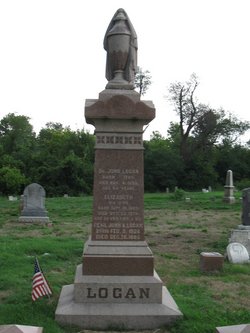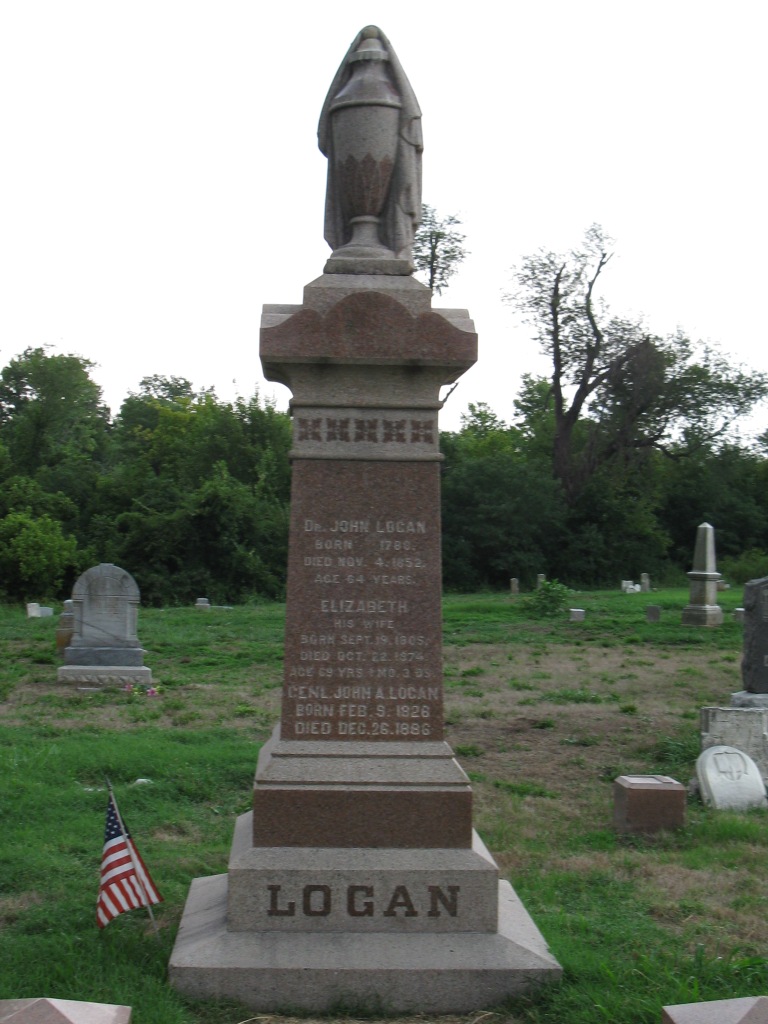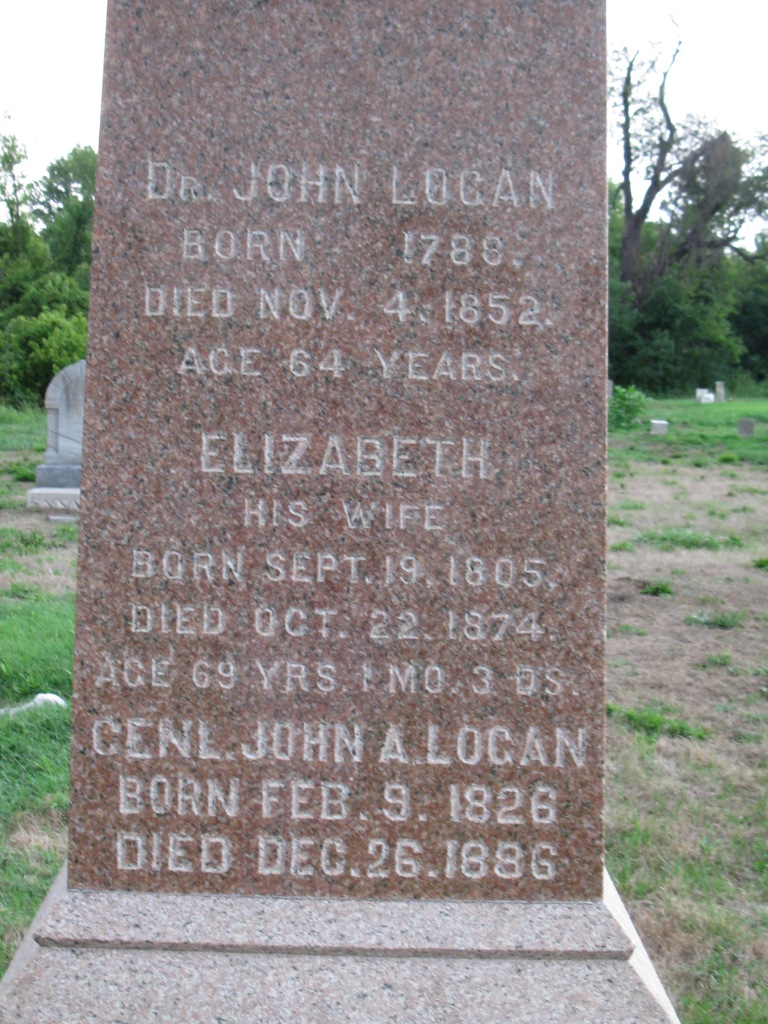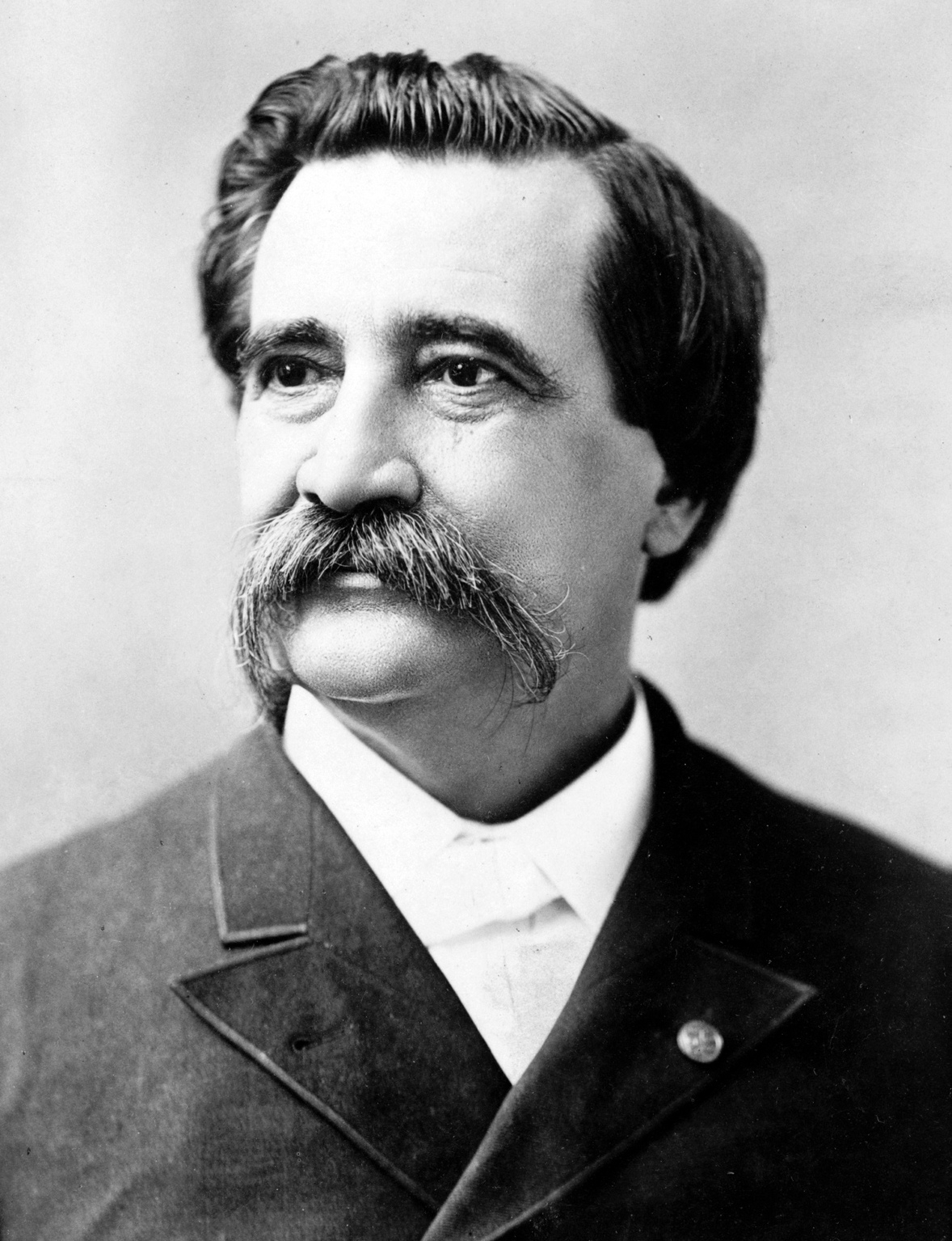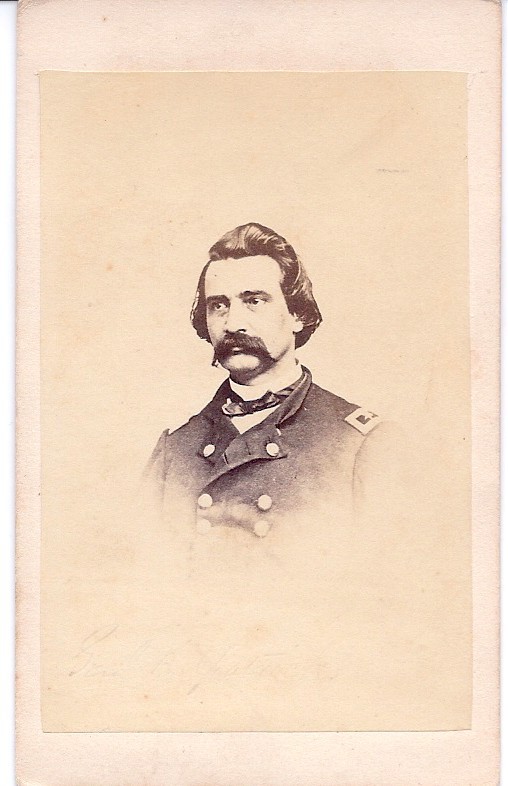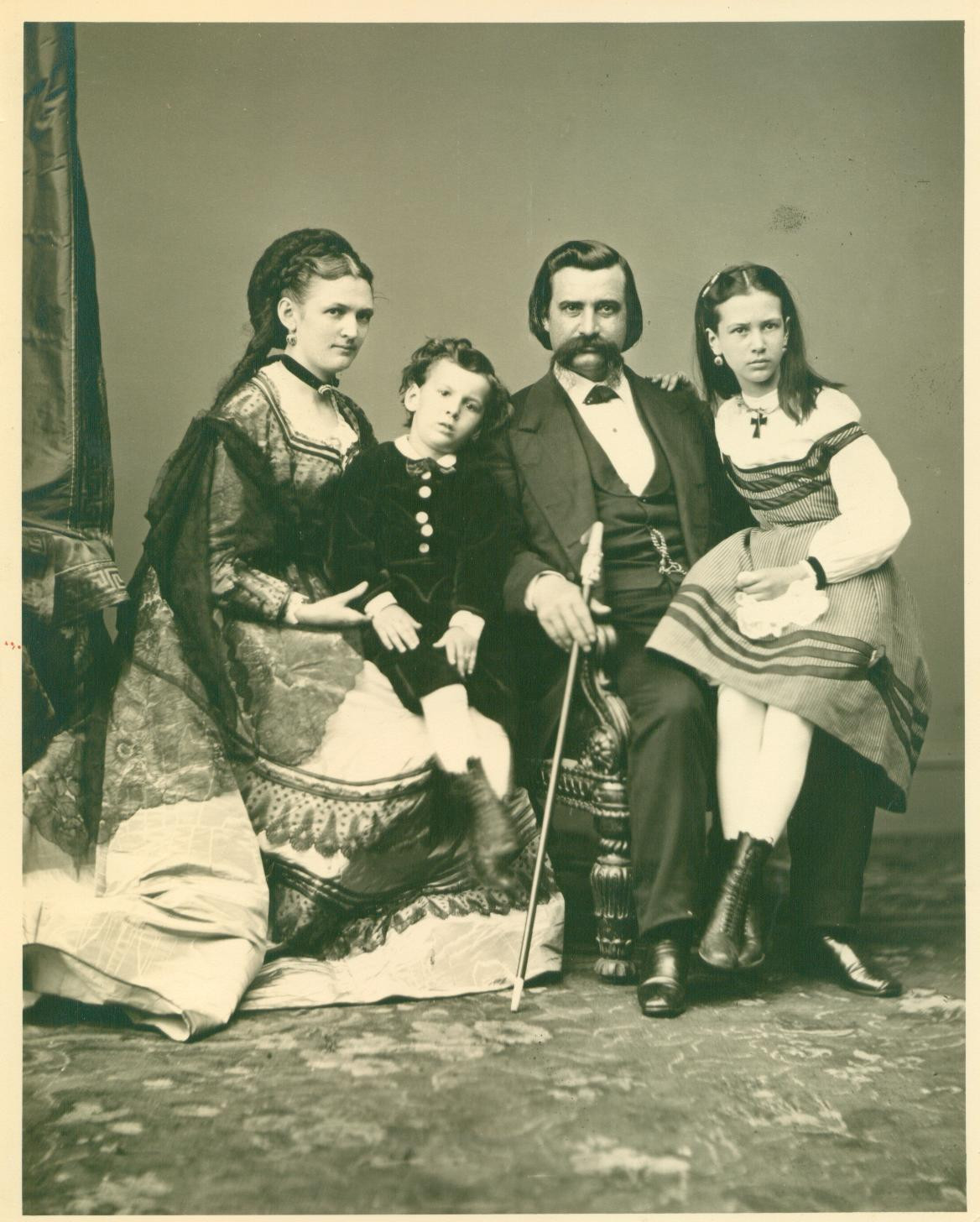Husband of Mary Simmerson Cunningham, m. November 27, 1855, Shawneetown, Gallatin County, Illinois
Father of John Cunningham, Dorothy Mary "Dollie", & Manning Alexander, who was later known as John Alexander, Jr.
In 1847, Logan volunteered for the Mexican War. After the war, he came back to Murphysboro and was elected Jackson County Clerk, but later resigned to earn a law degree at Louisville University.
In 1852, Logan was elected as a Democrat to the Illinois House of Representatives. In 1858, he was elected to the U.S. House of Representatives.
When the Civil War broke out, he volunteered for the Union Army. In August 1861, Colonel Logan began to assemble the 31st Illinois Volunteer Infantry. On March 21, 1862, he was promoted to Brigadier General, after the battle of Fort Donelson, for meritorious conduct and assigned to the army under the command of General Grant. After the battle of Shiloh, he was promoted to Major General on November 29, 1862. He accompanied Grant through Vicksburg and then went with Sherman through Mississippi and Alabama to Chattanooga, Tennessee and on November 24, 1863, he fought in the Battle of Mission Ridge. In 1864, he briefly commanded the Army of the Tennessee when General McPherson was killed during the Battle of Atlanta. From Atlanta, he then went to Savannah, through the Carolinas and to Richmond, Virginia and then to Washington, D.C.
After the war, he returned to the U.S. Congress in 1867-1871, as a Republican. He served as U.S. Senator from Illinois from 1871-1877 and 1879-1886. He was a candidate for the Vice-Presidency of the U.S. during the 1884 election with James G. Blaine.
He held the position of President of Grand Army of the Republic, an organization for honorably discharged Union veterans of the Civil War and is regarded as the person responsible for establishing Memorial Day as an official holiday. On May 30, 1868, he signed General Order No. 11 at Woodlawn Cemetery in Carbondale, Illinois designating Decoration Day or as we know it today, Memorial Day, as a national holiday.
Husband of Mary Simmerson Cunningham, m. November 27, 1855, Shawneetown, Gallatin County, Illinois
Father of John Cunningham, Dorothy Mary "Dollie", & Manning Alexander, who was later known as John Alexander, Jr.
In 1847, Logan volunteered for the Mexican War. After the war, he came back to Murphysboro and was elected Jackson County Clerk, but later resigned to earn a law degree at Louisville University.
In 1852, Logan was elected as a Democrat to the Illinois House of Representatives. In 1858, he was elected to the U.S. House of Representatives.
When the Civil War broke out, he volunteered for the Union Army. In August 1861, Colonel Logan began to assemble the 31st Illinois Volunteer Infantry. On March 21, 1862, he was promoted to Brigadier General, after the battle of Fort Donelson, for meritorious conduct and assigned to the army under the command of General Grant. After the battle of Shiloh, he was promoted to Major General on November 29, 1862. He accompanied Grant through Vicksburg and then went with Sherman through Mississippi and Alabama to Chattanooga, Tennessee and on November 24, 1863, he fought in the Battle of Mission Ridge. In 1864, he briefly commanded the Army of the Tennessee when General McPherson was killed during the Battle of Atlanta. From Atlanta, he then went to Savannah, through the Carolinas and to Richmond, Virginia and then to Washington, D.C.
After the war, he returned to the U.S. Congress in 1867-1871, as a Republican. He served as U.S. Senator from Illinois from 1871-1877 and 1879-1886. He was a candidate for the Vice-Presidency of the U.S. during the 1884 election with James G. Blaine.
He held the position of President of Grand Army of the Republic, an organization for honorably discharged Union veterans of the Civil War and is regarded as the person responsible for establishing Memorial Day as an official holiday. On May 30, 1868, he signed General Order No. 11 at Woodlawn Cemetery in Carbondale, Illinois designating Decoration Day or as we know it today, Memorial Day, as a national holiday.
Family Members
-
![]()
Louisa Villars Logan Cummings
1816–1895
-
![]()
John Alexander "Black Jack" Logan
1826–1886
-
![]()
Dorothy Adeline Logan Thomas
1830–1864
-
![]()
Margaret Caroline Logan
1832–1833
-
Darthulia Angeline "Annie" Logan Blanchard
1834–1894
-
![]()
William Henry Logan
1836–1868
-
James Villars Logan
1840–1917
-
![]()
Philip Benton Logan
1841–1846
-
![]()
George Marion Logan
1842–1846
-
![]()
Solomon J. Logan
1845–1845
Advertisement
Advertisement
